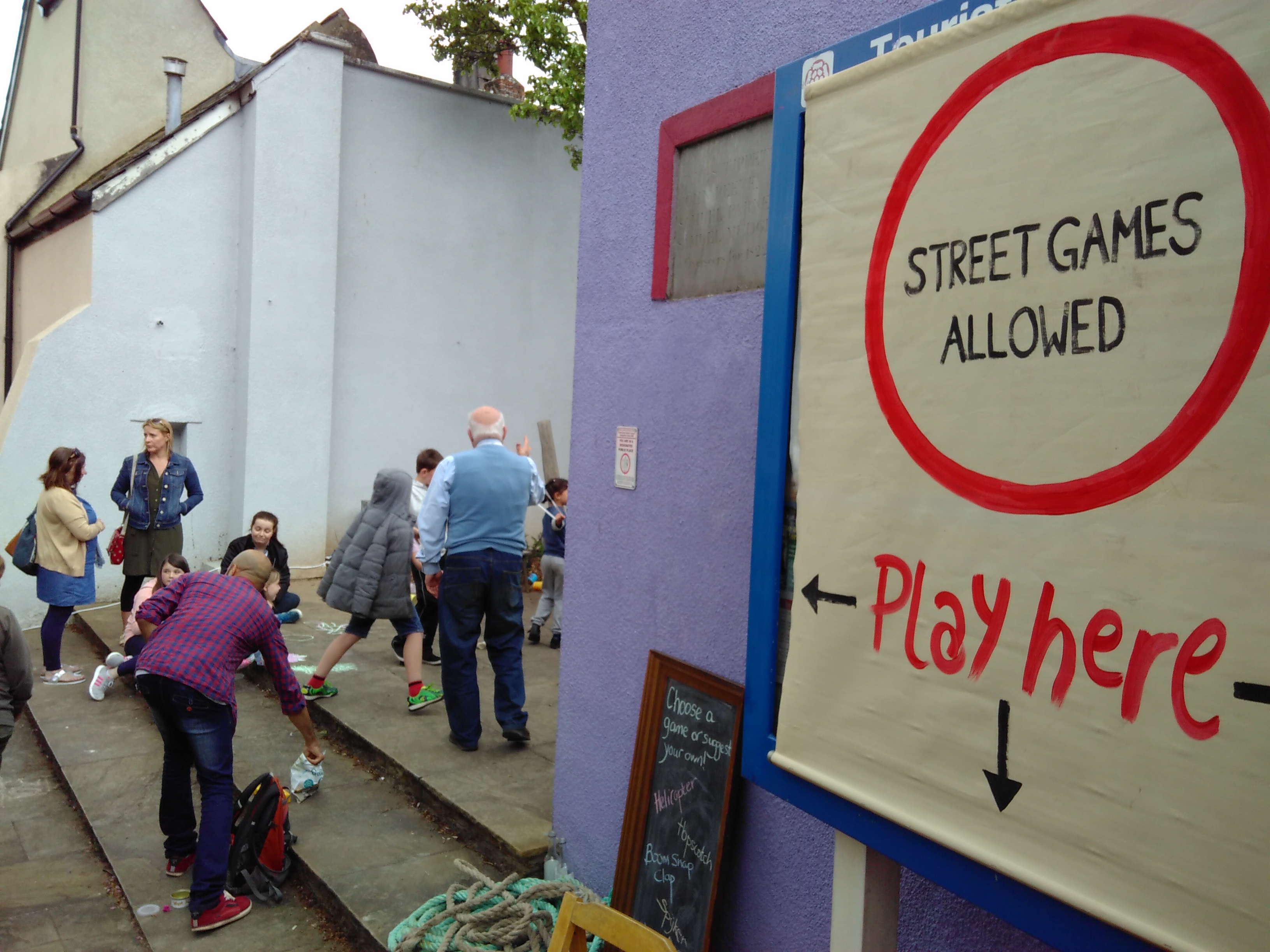
April 25, 2017 / Leave a comment
Podcast: An afternoon playing in the street
A 1975 study found that 75% of children played on the roads and pavements near their homes. One of my very favourite cartoon books of all time, ‘Willy the Kid’, by my favourite cartoonist of all time, Leo Baxendale, is all about a group of kids who spend all their time out of doors, playing in the street, in waste ground, getting up to all sorts. It was commonplace. By 2005, when a similar survey was conducted, only 15% of children were playing in the streets. The cars took over the streets, and kids retreated indoors to be increasingly entertained by screens, or to be ferried from organised activity to organised activity. The streets went quiet.

There are many reasons for this. One key one, as I’ve said, is cars. Cars parked along the kerbs where kids played “Kerbie”, up against the walls that were needed for all kinds of games, along the flat streets where hopscotch grids could be drawn out. Parents became more terrified that random murderers and abductees were roaming the streets in spite of all the statistics to the contrary. People became less tolerant of seeing kids around, less tolerant of noise and boisterousness. One survey in 2003 even found that 75% of adults supported the idea of a legally enforceable curfew on teenagers.
As the kids spent more and more time on smartphones, Xboxes and watching the TV, and whole culture of street games started to disappear. Parents tried to convince themselves that a Playstation gave kids “hand/eye co-ordination” in a way that in any sense compared to street games. Childhood obesity rose. An ‘epidemic of loneliess’ was declared. The gradual reduction in the amount of time in the school day dedicated to playtime also didn’t help. Games like Queenie, Jimmy Jimmy Knacker, Murder Ball and Eggy Moo started to disappear, as more and more people forgot how to play them.

Last Sunday, a group of people in Totnes organised the first Totnes Street Games Festival, an afternoon of games and play in the Rotherfold, a square at the top of the town. It was really quite wonderful. The place pulsed with noise, children dashing around, singing, the odd child crying over a grazed knee, laughter. Here is a podcast I made on the day, capturing some of the organisers, including Inez Aponte, Toni Spencer and Ian Blackwell, as well as some of the parents and children who were enjoying the day:
The great thing about street games is that they are played usually without adult supervision. There are rules to each game, but they are kind of flexible. Bits can be changed, dropped or added in. Kids learn to compromise, to share, to collaborate, to resolve disagreements. The rules are negotiable, rather than most computer games where you are playing someone else’s story, with rules that are fixed.
You don’t need to buy much in order to play in the street. A skipping rope perhaps. Or a ball. A cricket bat maybe. A piece of chalk. Certainly nothing that needed any batteries. Nothing that needed a wifi connection. Just you, your mates, and some time. It was fascinating to see how naturally most of the kids in the Rotherfold slipped into the mode of playing together, of learning the rules and then adapting them. I loved the moment when the skipping (I had forgotten just what hard work skipping is!) turned into Tug of War in the space of just a few chaotic seconds.

It was interesting also to see how some kids were really struggling with the idea of just being one part of a big group of kids working out the rules together. As our culture becomes more and more individualistic, it can be more of a struggle for some kids to be able to feel happy with not being the centre of each activity. It was also interesting to see how the adults initially stood around thinking that they were there to enable their kids to play, and then realised that they could play too.
One of the wonderful things about the Totnes event was how refugees from Africa and Pakistan, now living in Totnes, brought games from their cultures, and how they fitted in. There was also a great Dutch game called ‘Spijkerpoepen’, where you had to tie a screw on the end of a piece of string to the back of your trousers, and then only by looking backwards between your legs, get the screw into a bottle. It required amazing levels of concentration, as I hope this photo conveys. You should try it at your next staff meeting at work.

For me, street games are a key part of children living an imaginative childhood. There are boundaries, constraints, but not excessively so. There is negotiation to have. It requires part of your brain, but not all of it, so there is still time for daydreaming as well. It is outdoors, and intergenerational. It is rooted in history and culture, but not suffocatingly so. In a couple of weeks I am visiting ‘Playing Out’ in Bristol, an organization who organizes street closures so that kids can play. I’ll let you know how that goes too…
To find out more about the event, check out Occupy Play. They also asked me to point out Network of Wellbeing‘s support of the event.
Comments